
The Maine Law, passed on June 2, 1851 in Maine, was the first statutory implementation of the developing temperance movement in the United States.

Lillian M. N. Stevens (1843–1914) was an American temperance worker and social reformer, born at Dover, Maine. She helped launch the Maine chapter of the Woman's Christian Temperance Union (W.C.T.U.), served as its president, and was elected president of the National W.C.T.U. after the death of Frances Willard. Stevens also served as Editor-in-chief of the W.C.T.U.'s organ, The Union Signal.
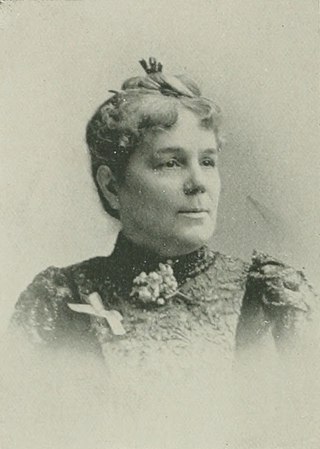
Mary Towne Burt was a 19th-century American temperance reformer, newspaper publisher, and benefactor from Ohio. Burt was identified with temperance work nearly all her life. She was the first president of the Auburn, New York branch of the Women's Christian Temperance Union, and beginning in 1882, served as president of the New York State Society of the Union. In 1875, she became the publisher, and subsequently the editor, of Our Union, the organ of the society, and in 1878–80 was the corresponding secretary of the National Union. For several years, Burt had charge of the legislative interests of the union, and several laws for the protection of women and young girls resulted from her efforts.
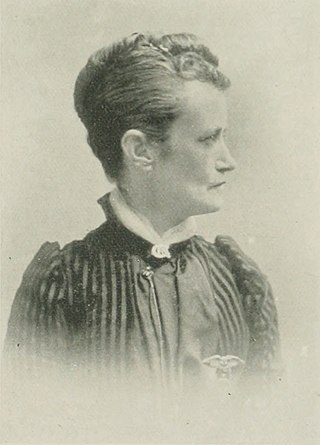
Annie Le Porte Diggs was a Canadian-born American activist, journalist, author, and librarian. She was the chairman of the delegation from Washington, D.C. for the National People's Party Convention, in Omaha, in 1892. It was the first time a woman ever led a delegation at a national political convention. She was a speaker for the People's Party in nearly every state and territory. She served as state librarian of Kansas, 1898–1902. A writer, Diggs served as the associate editor of The Advocate, Topeka, Kansas, and was the author of Little Brown Brothers and the Story of Jerry Simpson. Diggs died in 1916 in Michigan.

Nellie Blessing Eyster was an American journalist, writer, lecturer, and social reformer. She was a grand-niece of Barbara Fritchie.

Caroline Brown Buell was an American activist who lectured and wrote on behalf of temperance and suffrage. She served as the assistant recording secretary (1878–80), corresponding secretary (1880–93), and a member of the Our Union publication committee (1876–83) of the National Woman's Christian Temperance Union (WCTU); as well as the president (1904) and corresponding secretary (1875–86) of the Connecticut WCTU. She also originated the plan of the Loyal Temperance Legion, the children's society of the WCTU. Buell wrote extensively for temperance publications, and other papers and magazines. She made her home in East Hampton, Connecticut.

Lorenza Haynes was an American librarian, minister, school founder, suffragist, and writer.
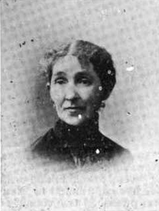
Henrietta Gould Rowe was an American litterateur and author of the long nineteenth century.

Martha E. Sewall Curtis was an American woman suffragist and writer. She delivered notable lectures at the meetings of the National Woman Suffrage Association in Boston. For years, she edited a weekly woman's column in the News, of Woburn, Massachusetts, and was president of the Woburn Equal Suffrage League. For a number of years, she conducted in Boston a bureau of stenography and employed about 20 women. Her publications included Burlington Church (1885), Burlington (1890), and Ye olde meeting house (1909).

Novella Jewell Trott was an American author and editor. She worked on the editorial staff of the E. C. Allen publishing company and served as sole editor of Practical Housekeeper and Daughters of America. In 1893, she served as vice-president for the Woman's Press Department of the World's Columbian Exposition, in Chicago.

Martha Pearson Smith was an American poet and musician of the long nineteenth century. She made significant contributions in secular and sacred verse. One of her best songs was "Jennie and I", which was set to music by Prof. T. M. Towne. She was a champion of the cause of temperance and did much to advance the movement in Minnesota.

Eliza R. Sunderland was an American writer, educator, lecturer, and women's rights advocate of the long nineteenth century. She was a prolific writer for literary and religious papers and magazines. She was also prominent in her religious denomination, no woman in the country being called upon more often than Sunderland for addresses at local, state, and national Unitarian gatherings. She was one of the organizers and the first president of the Western Women's Conference. At the Parliament of the World's Religions in Chicago, in 1893, she represented the Unitarian women of the U.S. and gave one of the most notable addresses of the parliament. She was especially well-fitted to serve as a member of the board of school visitors in Hartford, Connecticut on account of her lifelong interest in school matters, her experience as a teacher, and her intellectual training.

Sarah Katherine Taylor was an American evangelist and temperance activist. She was the editor of, The Little Christian, All Nations Monthly, and Bible Faith Mission Standard.

Lucia Faxon Additon was an American writer, music teacher, and Woman's Christian Temperance Union (WCTU) official. In addition to being a pioneer in WCTU work on the Pacific Coast, she was known as a leader in philanthropic, education, and religious work. Additon was also a clubwoman, being the founder and president of the Woman's Press Club of Oregon, and State chair of Industrial Relations in the Oregon Federation of Woman's Clubs.

Sara J. Dorr was an American temperance leader. She served as California state president of the Woman's Christian Temperance Union (WCTU). Aside from her anti-liquor activities, Dorr had been prominent in red light abatement and other social movements. She relinquished active control of the WCTU in 1921 and thereafter, devoted most of her time to lecturing and traveling.
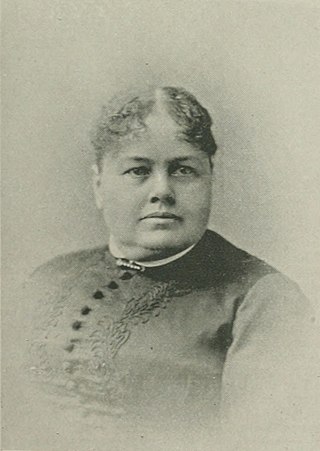
Cornelia Maria Dow was an American philanthropist and temperance leader, interested in charitable, philanthropic, and reformatory work in her home state of Maine. She was affiliated with the Woman's Christian Temperance Union (W.C.T.U.), as well as the Portland, Maine Home for Aged Women, and the Temporary Home for Women and Children.

Lella A. Dillard was an American temperance leader. She served as president of the Georgia State Woman's Christian Temperance Union (W.C.T.U.), and afterwards as National Director of the W.C.T.U.'s Peace Department.
Charlotte Evelyn Gay, was an English social reformer whose affiliations with the Church Army and her recognition as an Officer of the Order of the British Empire (OBE) marked her as a significant temperance figure of the early 20th century.

Augusta Merrill Hunt (1842–1932) was an American philanthropist, suffragist, and temperance leader. She was identified with many of the prominent charitable organizations of Portland, Maine, notably that of the Portland Fraternity, the Associated Charities, the Home for Aged Women, the Maine Woman's Suffrage Association (M.W.S.A.), and the Woman's Christian Temperance Union (W.C.T.U.). She was the first president of the Portland branch of the W.C.T.U.
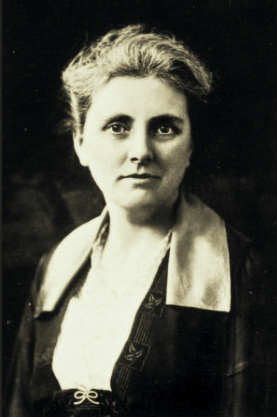
Deborah Knox Livingston was a Scottish-born American lecturer associated with temperance and suffrage movements. She spent much of her life in service to the National and World's Woman's Christian Temperance Union (WCTU), as well as the Young Women's Christian Association (YWCA), Federation of Women's Clubs, League of Women Voters, and World League Against Alcoholism (WLAA). In Maine, she served as the chair of the state's Suffrage Campaign Committee, while in Rhode Island, she was President of the state's WCTU. In addition to the textbook, Studies in Government (1921), Livingston was the author of several treatises and articles.



















